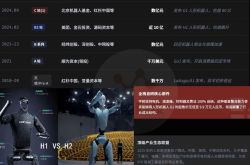From "Claude Cutoff" to "Collaborating with Rivals": AWS's AI Ecosystem Strategy Unveiled
![]() 09/24 2025
09/24 2025
![]() 536
536
Editor's Note: As a leading model in contemporary programming, Claude's abrupt decision to deny services to Chinese enterprises is far from a straightforward business move. Amid escalating global tech rivalries, the geopolitical undertones of this selective "cutoff" demand profound reflection.
Intriguingly, just as speculation mounted over the hidden agendas, AWS executed a strategic maneuver of "giving before taking." Notably, AWS stands as a major investor in Anthropic. By prominently featuring Chinese models at the precise moment of Claude's withdrawal, what is this capital behemoth up to?
One interpretation posits this as a premeditated "diversionary tactic" by AWS. By creating a market void through Claude's restrictions and promptly introducing alternatives, AWS sustains its global AI influence without appearing overly dominant. This "carrot-and-stick" approach exemplifies a masterclass in business strategy.
The Cloud Giant That Doesn't "Go It Alone": A Distinctive Approach
Throughout its history, AWS has adhered to a principle of diversification, seemingly encoded in its DNA. From early open-source software to today's AI models, AWS has consistently fostered a "thriving" ecosystem. This strategic departure from the norm contrasts sharply with other tech giants.

While Microsoft has fully committed to OpenAI and Google focuses on its proprietary PaLM and Gemini models, AWS continues to broaden its model portfolio. This seemingly "scattered" approach carries profound implications. In the unpredictable realm of AI, the risks of over-reliance on a single technological path far outweigh the costs of maintaining a diversified ecosystem.
This time, AWS not only listed Alibaba Cloud's Qwen3 but also simultaneously introduced DeepSeek v3.1. Notably, Alibaba is AWS's primary competitor in the Asia-Pacific market. This audacious move of "collaborating with a rival" is truly remarkable. Does this signal a redefinition of traditional competitive landscapes in the AI era?
Diversification or "Hedging Bets": A Strategic Dilemma
On the surface, AWS's recent actions underscore its enduring philosophy of "Choice Matters." However, a closer examination reveals a shrewd business strategy with multiple layers:
Firstly, it's a matter of perfect timing. By swiftly offering alternatives when Claude restricts Chinese enterprises, AWS reassures affected customers and mitigates potential market losses. This "timely intervention" is bound to win market favor.
Secondly, by introducing top Chinese models, AWS achieves a strategic equilibrium. Technologically, it enriches its model matrix; geopolitically, it gains a certain "hedge"; and competitively, it opens new avenues for collaboration.
Thirdly, this is an attempt to transcend traditional competitive barriers. By seizing this opportunity to engage with Alibaba, a "rival," AWS not only paves the way for potential future deep cooperation but also sends a positive signal to the industry: in the AI era, collaboration may trump confrontation.
Unexpected Winners: A Multi-Faceted Victory
In this intricate game, all parties appear to have found their respective benefits.
For Chinese enterprises, they gain more options. Faced with Claude's restrictions, the ability to swiftly switch to equally capable alternatives significantly reduces transition costs.
For Alibaba, it unexpectedly opens a new international market channel. Through AWS, the world's largest cloud computing platform, the Qwen3 model will gain unprecedented global exposure. This "piggybacking" approach may prove more efficient than going solo.
For AWS, this collaboration not only cements its platform's leading position but, more importantly, establishes a model of open cooperation. In the burgeoning field of AI, setting such a precedent may hold greater long-term value than short-term commercial gains.
The Future Beckons: A New Industrial Paradigm
If the Claude incident served as a wake-up call, then AWS's recent maneuvers undoubtedly represent the most brilliant response. Beneath the seemingly tranquil surface, a grand strategic game for the future of the AI industry is unfolding.
Interestingly, the winner of this game may not lie in who can dominate but in who can strike the optimal balance between competition and cooperation. AWS has demonstrated to the industry through tangible actions that in the new AI race, "symbiosis" may be the ultimate outcome.
After all, in this era of constant flux, no single company can shoulder the entire burden of AI development alone. In this emerging world, still taking shape, forging alliances proves wiser than standing alone.
As for how this grand strategic game will ultimately unfold? Let's wait and watch.







